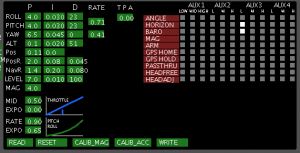Here you can find Cura quickprint default settings / presets:
High quality print: Layer height: 0.06 mm Walls: 0.8 mm, Fill: 20%
Normal quality print: Layer height: 0.1 mm Walls: 0.8 mm, Fill: 20%
Fast low level quality: Layer height: 0.2 mm Walls: 1 mm, Fill: 10%
All settings in the source code of Cura https://github.com/daid/Cura/blob/SteamEngine/Cura/gui/simpleMode.py
